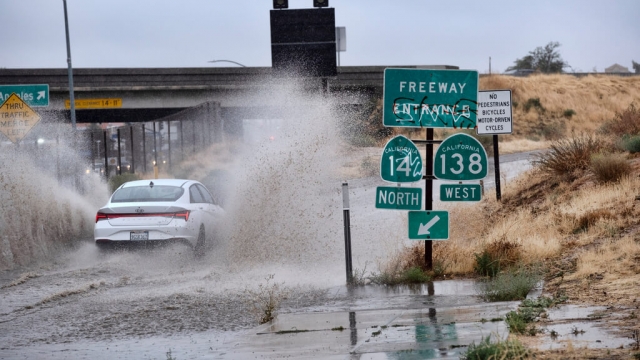Post-Tropical Cyclone Hilary may no longer be a tropical storm, but it continues to leave its mark in the Western U.S.
The once-Category 4 hurricane lost tropical storm status early Monday, less than a day after coming ashore on Mexico's Baja California peninsula.
Although no longer packing the punch it once had, Hilary entered the U.S. as a strong tropical storm on Sunday. Prior to its arrival, the National Hurricane Center issued its first-ever tropical storm warning for Southern California.
Forecasters warned the storm would cause catastrophic flooding, mudslides and power outages.
As of late Sunday, Raywood Flat, which is about 40 miles east of San Bernardino, recorded the most rain with over 10 inches. A number of other mountainous areas of Southern California reported over 6 inches of rain on Sunday.
Many mountainous areas of Southern California had hurricane-force wind gusts, with Big Black Mountain recording a gust of 84 mph around midday Sunday.
One person drowned in the Mexican town of Santa Rosalia when a vehicle was swept away in an overflowing stream, according to the Associated Press. Four others were rescued.
For the next two hours in Southern California's Palm Springs, the rain really started to pick up. This city normally gets about 5 inches of rain per year, but expected that much all in one day.
Over 9 million people faced flash flood alerts due to heavy rain in Southern California. Vulnerable areas included deserts and fire-scarred hillsides. Highways were muddy, drainage overwhelmed, and branches fell across San Diego to Los Angeles.
SEE MORE: FEMA expects funds to exhaust before peak hurricane season
“You do not want to be out driving around, trying to cross flooded roads on vehicle or on foot," Hurricane Center Director Michael Brennan said during a briefing. “Rainfall flooding has been the biggest killer in tropical storms and hurricanes in the United States in the past 10 years, and you don’t want to become a statistic.”
California Governor Gavin Newsom declared a state of emergency on Saturday.
By midday Sunday, thousands had lost power in San Diego and Los Angeles counties. Officials warned residents to be prepared for potentially prolonged outages.
"We also want to make sure that people have their flashlights, their water, make sure all of their devices are charged in case power goes out. And then, of course, the individuals can call 311 or 911 if there is a power line that is fallen," said Los Angeles Mayor Karen Bass.
Now that the storm has become post-tropical, what is left of Hilary is expected to bring heavy rain to areas as far north as Oregon and Idaho before fizzling.
@scrippsnews Tropical storm #Hilary caused #flooding, mudslides, and strong winds across Southern California Sunday, closing major roadways into Monday morning. The storm is now moving up into Nevada, Idaho and Oregon. #wx ♬ original sound - Scripps News
Trending stories at Scrippsnews.com



